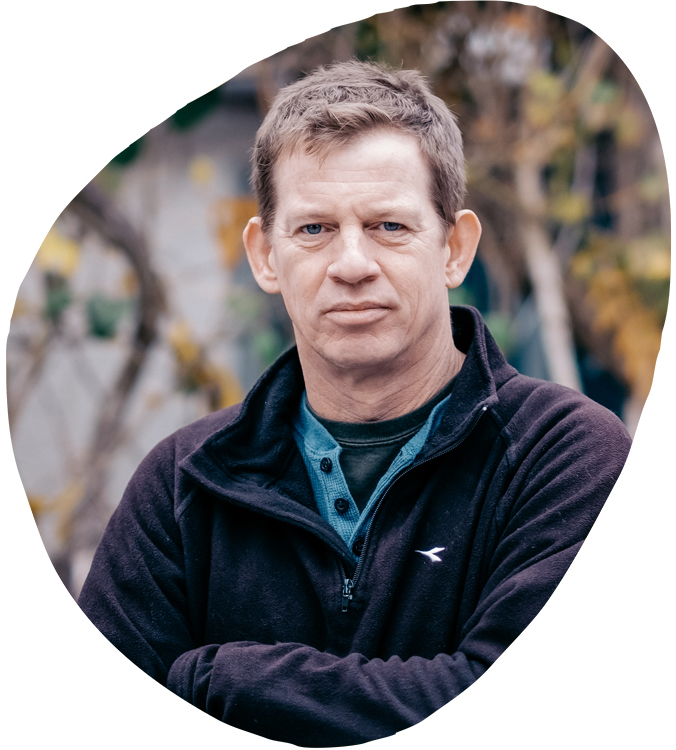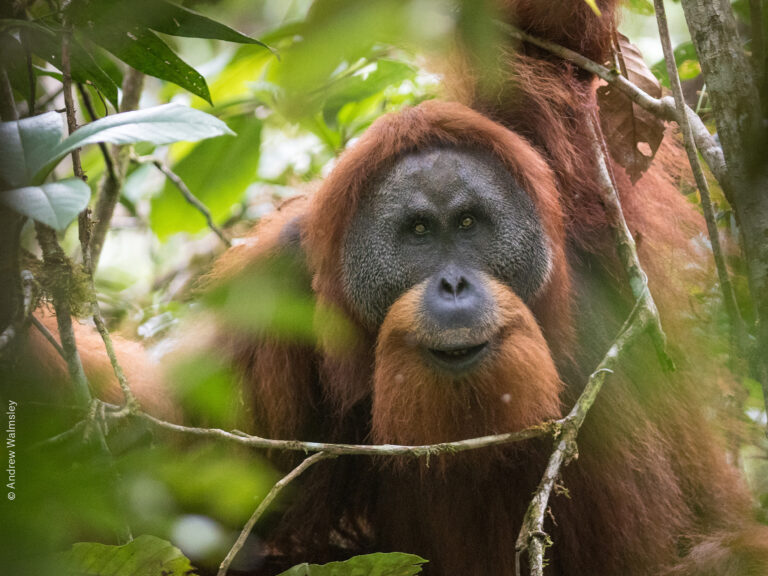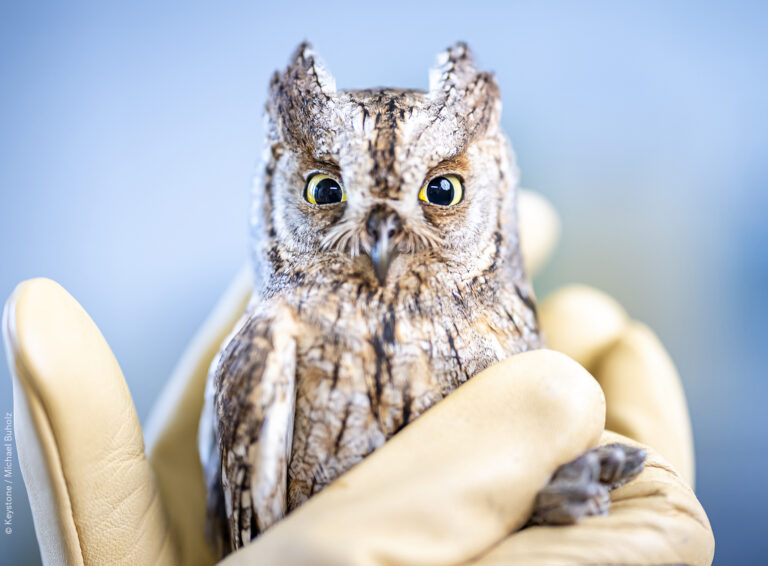
Orangutan Haven
The original idea for the Orangutan Haven was to provide a long term home and improved quality of life for orangutans that cannot be released to the wild. With 48 hectares of mixed agro forest land available, however, the vision and goals of the Haven are today much more than this. The Haven is unique, and highly innovative, and will be a major education, conservation and recreation asset for the entire region.
Goals
- Orangutans that can no longer be released in the wild, should live as close to nature as possible and receive optimal care to maximise their welfare
- To promote greater understanding and awareness of the need for sustainable development
- To increase understanding and support for environmental and biodiversity issues among a wide and diverse audience


Dr. Ian Singleton
Conservation Director PT Orang Utan Haven & Senior Advisor PanEco Foundation
Successes
- 9 islands to house unreleasable orangutans constructed and ready
- 24 specially designed aviaries constructed for focused captive breeding programmes with critically endangered Sumatran songbird species
- Education modules and programmes developed, numerous schools and other groups have already benefited from visits to the Haven
- Sustainable architecture using bamboo developed with mechanisms in place for harvesting, processing and construction
History






The Orangutans
The Orangutan Haven will be the new home for seven individual orangutans, some of which have been living in the Quarantine and Rehabilitation Centre for years. Due to blindness or other physical challenges, they can never be reintroduced into the wild and need to be cared for by experienced caretakers and veterinarians, to whom these sensitive animals have become accustomed. At Orangutan Haven, they live on naturalistic vegetated islands instead of in metal enclosures. The orangutans in the Haven will be ambassadors for their wild counterparts and instrumental in changing the perceptions and attitudes of visitors, allowing them to continue contributing to the long-term survival of their species.

Status: moved to the Orangutan Haven and out on the islands
Leuser was confiscated in 2004 near Kutacane in the southeast of Aceh from an illegal pet keeper. Shortly after, we were able to successfully release him into the protected forests of Bukit Tigapuluh National Park in Jambi province. Two years later, however, he wandered beyond the parks boundaries and was shot at by some local framers. The SOCP-Team immediately brought Leuser, who was completely confused and severely injured, to the Quarantine and Rehabilitation Centre. X-rays showed that Leuser had received 62 air rifle pellets in his body, 2 in one eye and 1 in the other, meaning he would be blind for the rest of his life.

Status: moved to the Orangutan Haven and out on the islands
Krismon was confiscated as an adult male in North Sumatra province. He had been kept since 1998 in a metal cage about 1.5 metres in length and width. He had entered this cage as a young infant and been there for almost 19 years! We know this as his name is short for «krisis moneter» or monetary crisis’, which refers to Indonesia in 1998. As krismon grew bigger, he had barely any space to move. It is no wonder that his rescue and subsequent intensive care had a strong impact on his physical and mental development. He still has occasional tremors and sometimes drools from his bottom lip, but on the whole he has made remarkable progress and loves to be high off the ground.

Status: moved to the Orangutan Haven and out on the islands
Paguh is a wild adult male who came to the SOCP with 26 air rifle pellets scattered all over his body. Like Leuser he is also blind. Despite being totally wild, Paguh is surprisingly relaxed towards the SOCP’s care team. He also regularly makes «long calls», to remind the other orangutans, and his care team, that he is there.

Status: moved to the Orangutan Haven and out on the islands
7-year-old Dina is the youngest resident to move into the Orangutan Haven. She was confiscated as an illegal pet in 2016 when just a few months old. During health checks after her arrival with the SOCP, it was noticed that she was suffering from encephalitis (infection of the brain). Over time, this led to almost complete paralysis of her entire body. After many months of round the clock care and hand feeding by a dedicated team, her body’s ability to function returned, but her vision remains seriously impaired.

Status: moved to the Orangutan Haven and out on the islands
Deknong was an illegal pet and was confiscated from her owner in 2007. Several months later we were able to release her at the edge of the Bukit Tigapuluh National Park in Jambi. After some time, free in the forest, she was found on the ground one day by the SOCP surveillance team. For some unknown reason she was virtually paralyzed from the waist down and had strange growths on some of her joints. Fortunately, her body gradually recovered and today she is fit and active again, but her left wrist remains severely bent and she cannot fully extend her arm.

Status: moved to the Orangutan Haven and out on the islands
Lewis was evacuated from a large plantation area in Aceh province. Large tracts of his forest home have been converted to agriculture in recent years, affecting countless other orangutans as well. With little habitat left, Lewis was forced to look for food in the plantations, when local farmers tried to scare him away by shooting at him with air guns. Lewis needed surgery twice but recovered well, though he did lose his eyesight.

Status: moved to the Orangutan Haven and out on the islands
Fazhren fell victim to the illegal wildlife trade as an infant and grew up in Malaysia. When he was found to have been smuggled into the country illegally, several years later, he was repatriated to Indonesia, where he arrived with us in 2013. By then, Fazhren was already an extremely powerful fully adult male orangutan. Because he has spent his whole life in human hands and shows no natural shyness, the SOCP team feels it would be unwise to have him wandering around in a forest. The likelihood of him encountering humans and causing probles is too great. Sadly, therefore, even though he is fit and healthy, Fahzren will remain in human hands for the rest of his days.

Drh. Citrakasih Nente
Head of Ex-Situ Department
Songbird breeding programme
24 aviaries have been built for the captive breeding of endangered Sumatran songbird species. This initiative is at the request of the IUCN Asian Songbird Trade Specialist Group and is supported by the Silent Forest campaign of the European Association of Zoos and Aquaria.
Indonesia has the second highest number of globally threatened bird species in the world (146 species, as of September 2015). The wildlife trade is the biggest threat to many of these birds, besides the problem of degradation of their habitat, the tropical rainforest. The most affected bird groups are the songbirds as they are popular with bird keepers who enter them in singing competitions to win prizes.

The straw headed bulbul is often kept by people because of its melodious, trilling song. The greatest threat comes from trappers who capture it for the pet trade. Its status on the IUCN Red List of Threatened species is «Critically Endangered».

The Nias hill myna is «Critically Endangered» due to poaching for the pet trade. It has been officially protected under Indonesian Law. This species is endemic to the island of Nias and a couple of smaller islands offshore. It has even become the «mascot»-species for the island, but no free-living specimens have been seen in the wild in Nias since around 2000.

Protected under Indonesian law, the Sumatran laughing thrush has been listed as «Endangered species» on the IUCN’s Red List since 2016. Because of its loud, noisy behaviour, it is an easy target for trappers who capture it for lucrative sales. At least three breeding pairs are currently planned at Orangutan Haven.

This small but very colourful bird is endemic to Sumatra and possibly in imminent danger of extinction. It is therefore protected under Indonesian law and has been on the Red List as an Endangered species since 2016. Because of its beautiful plumage it is a popular bird among Indonesia’s bird keepers and regularly appears in the markets. Little is known about its current status in the wild but experts suspect that numbers have plummeted in recent years.
Education
The 48-hectare site of the Orangutan Haven is becoming a unique and comprehensive educational resource with an outreach to the entire region. The Haven’s environmental education team, in collaboration with local schools and the government’s education authorities have developed an innovative learning program for school groups, and others, of all ages. These allow us to promote wildlife and species conservation, ecosystem protection and sustainable development to a wide and diverse audience.
Individual visitors can follow three different nature trails, visit the interactive exhibition at the visitor centre, and wander around our ecofarming centre. We also offer guided excursions.

Three nature learning trails lead through the Orangutan Haven. They are thematically named after three of the areas in northern Sumatra where YEL operates field projects: the Leuser Ecosystem, Suaq Balimbing Research Station and the Jantho Orangutan Reintroduction Centre. The Leuser Ecotrail, which introduces different aspects of the Leuser National Park and Ecosystem, is already fully accessible and the Suaq trail will be completed in the next few months.

Since June 2022, schools from all over the region have been invited to visit the Orangutan Haven. School classes learn about the rainforest ecosystem on guided tours and are sensitised to environmental issues. They visit the Ecofarming Centre and experience the rainforest up close on the nature trails. The environmental education team visit schools too, where they raise awareness of biodiversity and present the Orangutan Haven.

The Rimba Raya Visitor Centre will be the central information point for visitors after crossing the iconic Bamboo Bridge. Here, visitors will be able to get information about all our activities and to book guided tours. The centerpiece will be an interactive exhibition where visitors can immerse themselves in the rainforest ecosystem and learn what they can do to protect this unique habitat.

We organise training and workshops on environmental education, biodiversity and species conservation for teachers and members of local communities. Together with them, we define, design and implement projects. Internships are offered to students of environmental education and sustainable development so that they can consolidate their skills and put them into practice.

Maria Suhatri
Head of Education Team Orangutan Haven, YEL
Sustainable Construction
At Orangutan Haven, climate protection and sustainable building are very important. By using new, innovative techniques in design but also in construction with materials that we process on site, we are doing pioneering work to rethink the conventional construction industry. In addition, our buildings are equipped with clean and renewable energy sources.
We are particularly strong in processing bamboo. Through our independent construction work, the Orangutan Haven has developed into a center of excellence for harvesting, treating and processing bamboo as a sustainable building material. In addition to the buildings, various products are made from bamboo that are used or sold locally.

In the tropical climate of Sumatra, fast growing bamboo provides an ideal material for sustainable construction. It is locally and abundantly available and plays a key role in the selection of our constructing methods. Bamboo provides an excellent alternative to hardwoods. Because the bamboo poles are hollow on the inside and have so-called nodal rings at regular intervals, they are light but strong and very stable. Spread over a total area of 47 hectares, the Orangutan Haven grows bamboo for its own use and serves as a model of sustainable forestry. It eliminates transportation costs for this important resource altogether. The bamboo poles are cleaned, immunized against termites, dried, and then used to build bamboo structures. Even the shingles for the roofing are made by our workers on site.

Worldwide, the construction industry is responsible for more than 30% of total carbon dioxide emissions. A considerable part of this percentage is generated by the production of cement. For this reason, we avoid the use of concrete as much as possible in the Haven. It is replaced by innovative construction materials made from local sand and clay. The walls of the buildings, for example, are created from layers of clay that are pressed into molds with homemade tampers, as shown in the video. In addition to avoiding cement, green technologies are used wherever possible. Photovoltaic panels are installed on the roofs, or they are ‘greened’ for its cooling and water absorbing effect.
.

The Orangutan Haven needs a reliable energy supply, which we produce ourselves as much as possible from clean and renewable energy sources. Since 2017, a micro hydro power plant on the premises has been supplying some of the electricity. The electricity for the ticket booth and the island facilities comes from solar panels installed on the roofs.

The restroom facilities run on rainwater that is filtered and treated on the green roof. The restaurant, too, will one day cover its water needs with filtered rainwater and draw its hot water from a solar-powered water heating system.
The infrastructure and construction methods at Orangutan Haven are unique. It is a place where you can discover what sustainable construction really means.

Suherry
Constructionmanager Orangutan Haven, YEL
Eco-Farming
The Orangutan Haven’s area of 52 hectares offers enormous potential to promote sustainable organic farming practices. A wide variety of cash crops, fruits and vegetables such as rubber, citrus, cacao, durian, banana, pandan leaves, spinach, pineapple, sugar cane, oil palm are present throughout the site’s existing traditional agroforest mosaic.
The Eco-Farm building next to the nursery was erected in 2019. It currently functions as a training facility for farmers, as an aula and shelter for visiting schools and other groups, and storage for seeds, crops and tools.


Partner
The Orangutan Haven is operated by the limited liability company PT Orangutan Haven. Our sister foundation YEL is the main shareholder of the company. It is financed by partner organisations and donations from private individuals.

YEL is our sister foundation in Sumatra. It is responsible for the implementation on site.
Other partners of the Orangutan Haven:
Animal Friends
Europäischer Tier- und Naturschutz e.V.
A big thank you to all our partners and donors.






